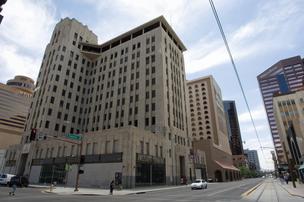As the famous cowboy, actor, and American humorist, Will Rogers, once said: “Buy land. They ain’t making any more of the stuff.”
Finding and buying distressed land deals at significant price discounts is one of the most promising ways to help real estate investors retire sooner rather than later.
On October 1, 2013 the CNBC website reported that America’s “Top 100″ largest landowners added over 700,000 acres to their landholding portfolios in 2012. The wealthiest Americans know that land is a finite asset class, which makes it a fantastic investment opportunity.
Distressed Land Opportunities

“Buy land. They ain’t making any more of the stuff.”
While other investments may end up worthless, land is a solid and viable asset class which may hold onto the land’s value over time much better than other investment choices.
Some of the more creative ways to find steeply discounted land deals include: foreclosure filings, land brokers, tax lien certificates or tax deed sales, mortgage brokers or bankers, contractors or developers, probate notices, land auctions, or by handing out “I Buy Land” business cards.
Timing and Zoning
Many Americans were wise enough to have purchased either individual lots near prime coastal regions or sizable acreage sites located in the progress of growth around expanding metropolitan areas at “bargain basement” prices.
As inflation rates and population growth skyrocketed during their land ownership, their land values increased rapidly.
Change of zoning for a land site, such as a rezoning from farmland to multi-family apartments, will improve the value significantly. When a landowner can build 10 units on a site as opposed to just a single family home, the land value is much improved.
Motivated Sellers
Unfortunately, many existing landowners may be land rich, but very cash poor. For others, their landholdings may have been passed down to them free over several generations.
Some motivated landholders may have lost access to land or construction financing options, which would have made their land much more valuable with new improvements. For others, they may have land loans that are “ballooning” or coming due and must be paid off in full.
Motivated sellers tend to offer some of the best prices and seller financing terms in exchange for a quick closing.
Less Development Competition
Since the last housing market peak near 2005, 2006, 2007, or 2008 (depending upon the U.S. region), the funding and development of construction loans for small, mid-sized, or large housing tracts has been well below historical norms.
With the glut of potentially millions of “shadow inventory” homes nationwide about to potentially flood the local MLS (Multiple Listing Service) in various regions, this concern about the large number of non-performing home mortgages scared off lenders from offering new construction loans for proposed residential housing tracts.
Additionally, the double digit (10% to 18%+) percentages of non-performing or delinquent construction loans in many “bubble” regions motivated lenders to offer much fewer construction loan options to their banking customers. As a result of fewer construction loans available, many builders used their own cash or private money to build their residential or commercial real estate projects.
For those builders who built quality new development projects, they typically had minimal competition for buyers interested in purchasing new homes as opposed to older resale homes. In 2012 and 2013, many new housing development communities in prime locations had buyers standing in line or literally even camping out in order to purchase their new “dream home,” which made their developers quite happy, wealthy, and relieved.
Financing Options
Between the 1st Quarter of 2008 and 2011, the estimated dollar amount for funded construction loans in the U.S. decreased from $630 billion plus to approximately $250 billion toward the later part of 2011. In recent years, larger banks have reduced their construction and development loan percentages the most, while some smaller community banks and private money sources have increased their construction loan program choices partly to fill the void caused by much fewer construction loan options.
One of the most challenging types of real estate to find financing for is raw or improved land. However, there are private money lenders willing to make shorter term loans. There are savvy landowners who will consider financing the sale of the land themselves by way of a newly created first mortgage for their buyers. The costs of the more flexible private money loan programs today are not too far off from the costs of bank construction loan options several years ago.
Land Is Finite – The Upside Is Infinite
During recessionary times, like in recent years, land prices typically fall the farthest in value. Yet, land – both raw and improved – can increase in value the most during prosperous times. So keep your eyes open for the most potentially lucrative land deals.
Land is truly a finite investment option. Those investors who are wise enough to find the best quality land deals may one day prosper, partly due to the advice offered by Will Rogers himself. Once demand for buildable dirt exceeds supply, the infinite sky may be the limit as it relates to future land values and land investment opportunities.



